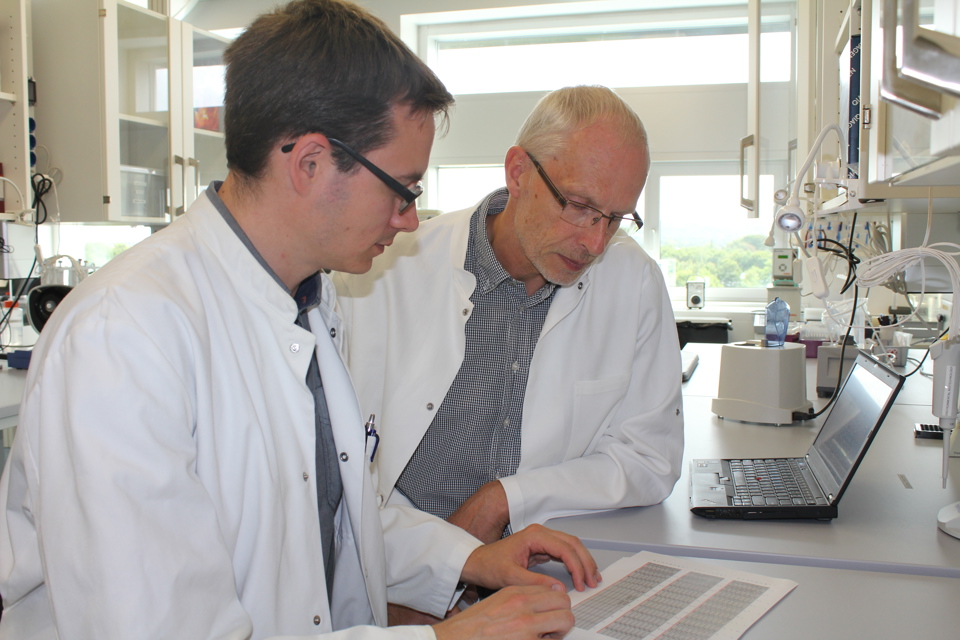In order to gather data for the project, the researchers need 10,000 samples from areas all over Denmark, as well as a select number of samples from extreme natural areas from the rest of the world.
- “The first year of the project will be an exploratory phase during which we are going to define which areas are of interest to us, and then gathering samples from these areas. In order to do that, we are going to collaborate with for instance the biologists here at the department to get insight into which specific sample locations will be relevant in order to cover all key types of Danish nature, such as soil, lakes, streams, fjords and so on” Mads Albertsen says and adds:
- “In addition, we will collaborate with the international project Earth Microbiome, in which researchers are gathering samples from all over the world. We want to cast as wide a net as possible to make a comprehensive reference work, and so we will be getting 500 samples from some of the most diverse environments in the world in order to map the bacteria of extreme areas too.”
Once-in-a-lifetime opportunity
The researchers are in no doubt that what they are embarking on is a once-in-a-lifetime opportunity whose results may in time benefit researchers, companies and citizens all over the world.
- “Our aim is that in four years’ time, we will have mapped a big fraction of the world’s bacterial species, as well as many eukaryotes. We don’t in fact know today whether there exists 10 or 100 million different species or even 1 billion, which means that by the end of the project, we hope to have identified, visualized and named all the major branches in the Tree of Life of microorganisms, including some that have never been seen before, and we will have shed light on areas that have up until now been blind spots” Mads Albertsen says.
Creating a global handbook of microorganisms
The researchers hope that the project will provide an extensive digital “handbook” to the benefit of not only Danish researchers but researchers all over the world.
“What we are aiming to do is not just to create a long list of all microorganisms, but turn it into a database that can function as a reference work where we or other researchers can add information such as their functions, characteristics and interactions – for instance how bacteria function in a specific type of field. This is why we refer to the project as the “Micro-Flora Danica” in reference to one of the largest Danish research projects ever in which all Danish plants were categorized in an extensive handbook” Per Halkjær Nielsen adds.
The database will include the name or number of each microorganism, information on where it can be found, and in time also information concerning its function, effects and how it can be used and utilized in different contexts.
- “The idea is that if researchers or companies anywhere else in the world is working with a specific microorganism, they can look up that organism’s ID in our database and find the basic characteristics of it. We are working from an open-data perspective from the very start, enabling other researchers to utilize as well as contribute to the database that we are building” Per Halkjær Nielsen explains.
Exciting future prospects
When the new reference work is finished, the future perspectives are almost endless. “With the new DNA technologies that are already available, we will soon be able to measure DNA in real-time – and as such also soon be able to identify microorganisms in real-time".
The four-year project, which is funded by a 30 mill. DKK grant from the Poul Due Jensen Foundation, takes its point of departure in a new method for identifying microorganisms that was published in January 2018. Mads Albertsen explains:
- “When you want to identify microorganisms (bacteria, archaea or microeukaryotes such as fungi), you look at a specific section of DNA that functions as a fingerprint. In order to do that, you need to read around 1600 letters of DNA, and until now that has not been possible to do in a high-throughput way. Even though DNA sequencing has been revolutionized over the last 10 years, to the degree that you can now analyze an entire human genome in a couple of days, we have not been able to use these sequencing techniques for analyzing this fingerprint gene, because it is too long: The current DNA sequencing machines are only capable of reading sequences of around 200 letters.”
However, last year a research group headed by Mads Albertsen published the results of three years’ hard work: A method for cutting the 1600-letter fingerprint sequence into smaller pieces, analyzing it on the new sequencing machines and then piecing them back together to get the complete fingerprint.
